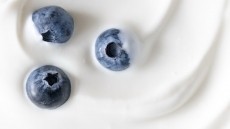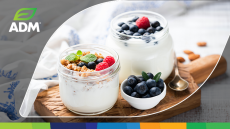Expert comment
Nitrite free: Where does the truth end?
cured', 'no nitrite added', 'without added nitrite' or even
'nitrite free' to promote a health image to consumers.
Industry expert Gerhard Feiner believes such statements can be
misleading.
Sodium nitrite (E 250) is by far the most often applied additive in the production of cured meat products in order to obtain the desired curing colour.
Sodium nitrite falls apart into Na + and NO2 - ions and nitrogen (nitric) oxide (NO) is obtained out of NO2 - in a chemical reaction by nitrous acid (HNO2) being the intermediate substance.
NO2 reacts with myoglobin ultimately forming the desired curing colour.
Nitrite also has a major impact in obtaining the specific "flavor" in cured meat products where components, originating from nitrite, react with sulphuric materials present in muscle tissue.
Nitrite also acts as an antioxidant in meat products and is also a very important hurdle against growth of countless harmful bacteria, especially Clostridium botulinum and Listeria monocytogenes.
Those important facts secure nitrite its place within the production of cured meat products.
However, nitrite is highly toxic by itself.
Residual nitrite in cured meat products contribute, under certain conditions, to the formation of nitrosamines, which are known to be carcinogenic.
Because of its toxicity and the potential of forming nitrosamine, stringent rules are in place all over the world to secure the addition of nitrite to meat products at a level "as much as needed" to fulfill its technological functions but keeping the level as low as possible at the same time.
On the other hand, those facts also provide a platform to invent 'healthy' meat products by the removal, or reduction, of nitrite within a meat product.
Recently, cured meat products such as raw fermented salami, cooked sausages and cooked ham came on to the market by being promoted as "naturally cured", "no nitrite added", "without added nitrite" or even "nitrite free" clearly intended to give a "healthy image" of such products to the consumer.
Such statements can be interpreted as purposely misleading the consumer because materials such as celery- and cane sugar juice as well as selected types of salt, which are high in "natural" nitrate, are used in the production of such "healthy" meat products.
There is mounting speculation that soil, used for growing those plants in first place, is enriched with nitrate to enhance the level of "natural nitrate" within them.
The grey-zone starts when such "natural" nitrate is introduced into meat products in conjunction with bacteria which are able to reduce nitrate to nitrite.
As a result, nitrite is obtained indirectly, and present in the meat product forming the desired curing colour.
Another misleading marketing-strategy of such a process is that nitrite normally, when added directly to meat during processing, is most often declared as "preservative" on the label of the meat product.
By adding nitrite "indirectly" it does not need to be declared on the label of the product and the term "preservative" therefore can be avoided on the label.
In most countries the term "preservative" in a meat product is not well liked.
Nitrate-containing vegetable or plant juices are most often declared as "vegetable- or plant extract" whilst selected salt, high in natural nitrate, is simply declared as "salt" thus covering up the addition of nitrate.
The grey-zone here is the nitrite ion NO2 - obtained out of the reduction of nitrate, which was introduced into meat through the addition of nitrate-containing plant extracts, or salt being high in "natural" nitrate, is of the same chemical composition as if nitrite would have been added directly to meat in first place.
Therefore, this material also has the potential to form nitrosamines.
As a result, the health benefit as portrayed to the consumer that "no nitrite is added" is not exactly the entire truth.
The described process of obtaining nitrite out of nitrate is just another way of introducing nitrite into meat, with all its desired technological functions, but without having to declare nitrite on the label of the product.
Another point quite often being brought into the discussion is the level of nitrite introduced and present in a meat product by adding "natural" nitrate-containing materials is much lower as if nitrite would have been added directly.
This is true to a certain point but the original marketing strategy of using terms such as "no added nitrite" gives a message to the consumer that no nitrite was introduced during processing and no nitrite is present in the final product.
This is not the case.
Despite all of the above ambiguities, the number of "naturally cured" or "no added nitrite" meat products is on the rise.
However, authorities in a few countries have started discussions already on how to regulate this topic further as they believe the consumer is getting misled.
Those discussions are often based on an understanding that terms such as "naturally cured" are more acceptable since the term "cured" provides consumers with the information that nitrite is present in the product.
On the other hand, terms such as "no added nitrite" are can easily misled the consumer and are also technically incorrect since the product is "cured", showing the typical curing colour, by the introduction of nitrite regardless of the source of nitrite or the method used to obtain nitrite.
Gerhard Feiner is a former factory and production manager.
His Meat Products Handbook, is published by Woodhead Publishing, based in the UK.















